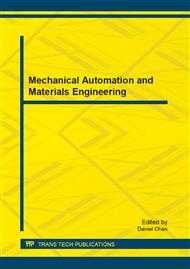p.664
p.669
p.674
p.679
p.687
p.692
p.696
p.701
p.706
Effect of Modification of Aluminum Borate Whiskers with Three Methods on Flexural Properties of Dental Resin Composites
Abstract:
This study aimed to compare three different methods for the modification of aluminium borate whiskers and investigate the effect of aluminium borate whiskers composites on flexural properties of dental resin composites. Method A was to mix aluminium borate whiskers and silicon dioxide (SiO2) nanoparticles directly. Method B was to modify the mixture of aluminium borate whiskers and SiO2 nanoparticles with sol-gel process of tetraethoxysilane (TEOS). Method C was to modify the aluminium borate whiskers with SiO2 nanoparticles which were repaired by sol-gel method of TEOS. The effects of the three methods were characterized by the TEM and SEM. There was a significant difference (p<0.05) in the flexural strength among three methods. Group C had a flexural strength of 149.59 ± 12.86 MPa (mean ± SD; n = 5), which is significantly higher than 95.28 ± 4.53 MPa for Group A and 123.14 ± 17.37 MPa for Group B. It is concluded that ceramic whisker reinforcement significantly improves the flexural properties of resin composites; different methods produce different effects.
Info:
Periodical:
Pages:
687-691
Citation:
Online since:
August 2013
Authors:
Price:
Сopyright:
© 2013 Trans Tech Publications Ltd. All Rights Reserved
Share:
Citation:


